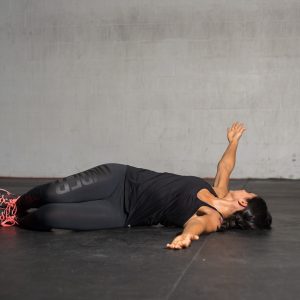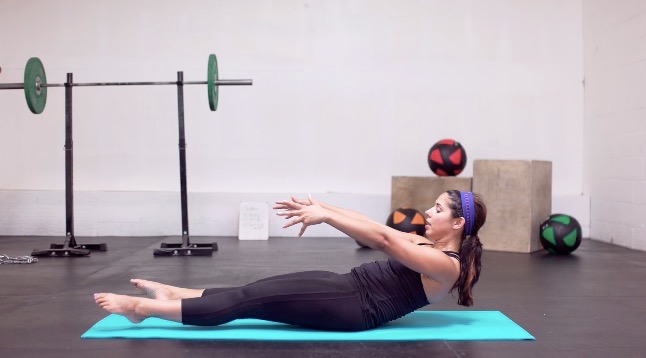When it comes to building a strong, resilient back, are you training for:
A) strength
B) mobility
C) stability
D) all the above
The answer is: D train them all.
The prevalent amount of back injuries seen in strength sports like CrossFit, powerlifting, and weightlifting should be enough to get you to start thinking about strength, mobility and stability of the spine. But if that doesn’t convince you, the American Chiropratic Association estimates Americans spend a ridiculous $50 million + each year on back pain!
The wallet doesn’t lie, amigos.
Anyone who’s spent quality time with a barbell has likely experienced some form of back pain. Some would say it’s the cost of being a badass and going after your athletic dreams, but that shouldn’t mean you have to just live with back pain.
Want short Pilates workouts for your back? Grab the Pilates FloWOD online course now!
Let’s talk spine
The strength community kinda, sorta knows that a flexible thoracic spine is important for healthy, functional movement (like safely pressing a barbell overhead). Looking around the gym, however, I see that the majority struggle to find a neutral spine and have limited flexibility in their backs anyways. Doing drills like the book opener below is a good start before a workout.

But let’s face it, a couple of drills done 2x a week isn’t going to change your lifting or undo years of poor movement patterns and prolonged sitting at a desk.
When we’re talking about spinal mobility, we’re really talking about flexing, extending, rotating and laterally flexing the thoracic spine and enabling the muscles that coordinate this to occur.
Related article: 3 Ways to Strengthen Your Back for Better Lifts
If our T-spine is tight AF and lacks the fluidity to do what it’s meant to do, the body readapts by pushing the mobility responsibility to other joints – mainly the shoulders and lumbar spine – as well as other muscle groups. It’s no wonder we’re crushing our backs and shoulders – they’re picking up all the slack!
Then there’s the area of general strength. Sometimes back pain is related to a weakness someplace else, like the hamstrings, glutes and core. Other times it has to do with general weakness in the back muscles.
Yes, you have to train those back muscles if you want to keep lifting heavy. But, if you come in with a stiff back and don’t know how to move your spine at all, you’re simply building loading dysfunction. Great.
Intelligent programming coupled with exercises that emphasize spinal mobility will really start building up a strong and healthy spine without compromising your training in the gym.
This is why Pilates has been so critical for myself and my athletic clients. The majority of the time, clients come to me with limited spine mobility, plenty of back aches, and the inability to flex, extend or rotate their spines without some sort of compensation.
Even though they are strong and train hard, they struggle to find a neutral spine or getting the right muscles to fire when they move. In my digital course, Pilates FloWOD, I tackle the importance of moving the spine, finding a neutral position and provide Pilates-based workouts for the purpose of achieving a more flexible back!


